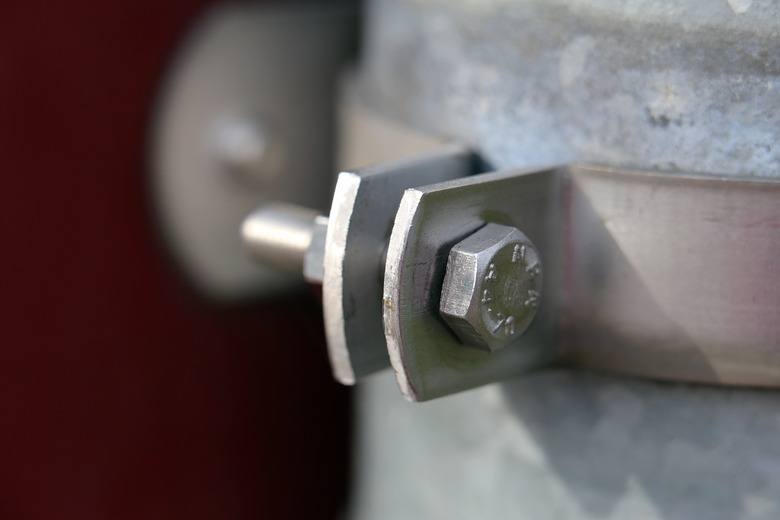How To Remove A Hex Screw
We may receive a commission on purchases made from links.
If you think you can remove a hex screw with an Allen wrench, you're sort of right but not quite. Technically, the kind of screws for which you use Allen wrenches are Allen screws. They have a hexagonal slot into which an Allen wrench will fit, but a hex screw has a raised hexagonal head. You need a hexagonal socket wrench that fits the head to remove one, or you can do the job with a regular wrench or a pair of pliers.
How you identify the screws is largely a matter of semantics, and semantics don't matter when you have to remove a stripped or stuck hexagonal screw or Allen screw. Some techniques work for Allen screws, some work for hex screws, and some work for both.
Two Ways to Remove a Hex Screw
Two Ways to Remove a Hex Screw
A hex screw has a raised head, and the person who drove it probably used a hexagonal socket with a drill or a socket wrench, and that's the first thing to try when you want to remove the screw. If the socket doesn't fit tightly, however, it can strip the head, and when that happens, the socket will spin ineffectually without spinning the head. There are two strategies for removing it that don't always work with an Allen screw.
The first is to grind a slot in the head using a rotary tool and a grinding wheel and then use a flathead screwdriver to turn the screw. The second is to clamp a set of locking pliers onto the head and use those to turn the screw. Both techniques will work better if you first douse the screw with spray lubricant to loosen it.
Some Ways to Remove an Allen Screw
Some Ways to Remove an Allen Screw
If you need to remove a stripped Allen screw and the head is raised above the surface, you may be able to clamp locking pliers onto it and remove it that way. If the screw is sunk too deeply for this to work, try one of these tricks:
- Place a ball peen hammer on the screw head and tap the hammer sharply with another hammer. This may bend the socket opening inward just enough for the Allen wrench to grip the screw.
- Find a Torx screwdriver with a head the same size as the screw head or slightly larger. Tap it into the socket and then push down as you turn the screwdriver counterclockwise. A Torx screwdriver bites better than an Allen wrench and may provide the grip you need.
Both of these techniques will work better if you first douse the screw with spray lubricant. Applying heat may also work, but if you do both of these together, apply the heat with a hair dryer (not a heat gun) to avoid igniting the lubricant.
A Screw Extractor Works for Both
A Screw Extractor Works for Both
The best way to remove any kind of stuck screw is to use a screw extractor, which is a conical drill bit with spirals. The spirals are reverse thread and will grip the screw and back it out when you operate the drill in reverse.
You first need to make a hole for the extractor, and you can do this with an ordinary drill bit that's the same size as the extractor. Drill the hole about 1/8 to 1/4 inch deep in the head of either a hex screw or an Allen screw and then insert the screw extractor and push down while you operate the drill at a slow speed. If the extractor slips, drill the hole a little deeper and try again. It's rare for this method to fail.
